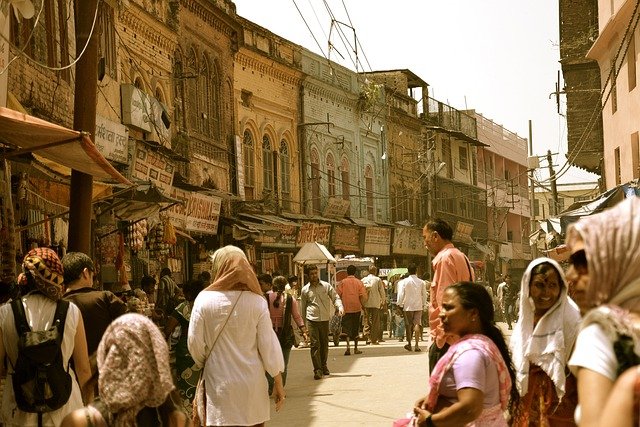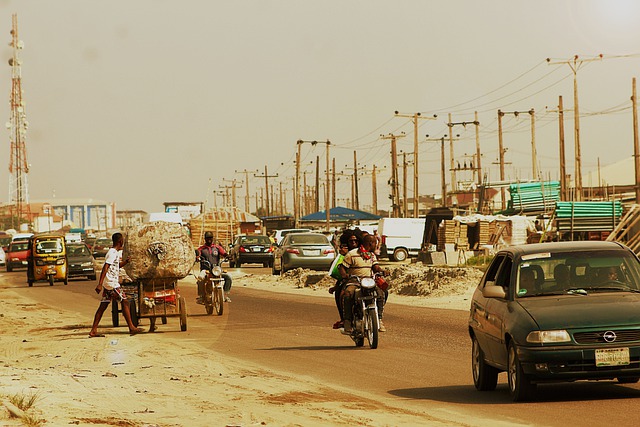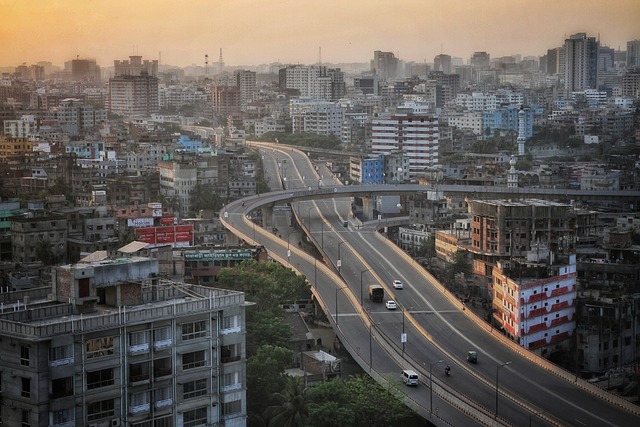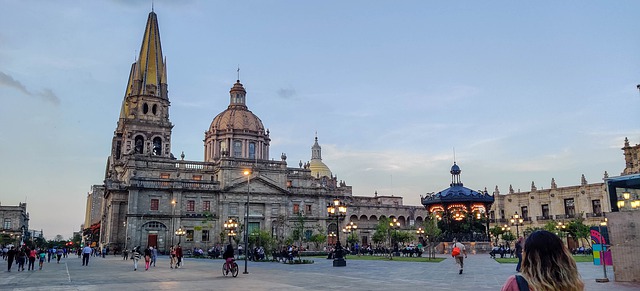Overpopulation is when the human population grows to a level too high for the environment to handle.
As a result, there could be more people in a crowded place than there are resources for survival, like transportation, water, shelter, food, or social facilities. Often, this leads to environmental damage, a worsening of the quality of life, or even
Population density (the number of people living in a particular area) can have horrible effects and problems if it is too many people—for example, immigration, lower mortality rates, medical advancements, and rising birth rates.
More and more cutting-edge technology is being introduced yearly. In many respects, this has had a profound effect on humanity. One of them has been crucial to their job since they can save lives and improve medical treatment for everyone.
As a result, individuals have lived longer, and more children have been born. Humans have always been able to have enough children and die enough to maintain stable population size.
Why Does Overpopulation Happen?
Birth rate vs Death rate.
The ratio of new births to deaths differs significantly among any given population. However, the population will stay steady if the number of births annually equals the number of deaths. In contrast to the short-term spikes in mortality rates, long-term increases in fertility rates take decades to develop.
Immigration.
Countries with the finest medical, educational, security and employment options attract many people. If more people leave the nation than arrive, it is typically positive. This usually signifies that food and clothing will be in high demand. There are not enough things to do because of this. However, even though the general population has not changed, that location now appears to be congested.
Children are forced to work.
Many countries throughout the world still use a significant amount of child labour, which is a significant issue! According to UNICEF research, an estimated 150 million children are presently employed in countries with few regulations governing the conditions under which they can labour.
To compensate for the loss of educational chances, they begin working at a young age and miss birth control options. Many low-income families look to their children as a potential source of income.
Having no plans for the family.
Many individuals in underdeveloped nations cannot read or write, and this is not uncommon. They are also clueless about family planning. As a result, they have more children because they marry their children early. People who lack adequate knowledge cannot comprehend the adverse effects of overpopulation and, as a result, do not employ family planning options.
Better hospitals.
Then came the industrial revolution. Technology advancements may have permanently shifted the balance. Science improved food production, allowing families to feed more people. Also, medical science came up with many new items that helped them combat many ailments.
For example, vaccines made it possible to treat illnesses that had previously killed many individuals—more food and fewer means to die tipped the scales and started the overpopulation spiral.
Countries with the largest population:
1. China - 1.4 billion.

China is densely populated. Most individuals name it their home. In 1979, the nation implemented a so-called "one-child policy" to combat overpopulation, which has since been repealed. Instead, China has established the two-child rule.
As a result, China's yearly population growth rate has been low since the1980s. 1.94 percent increase was recorded in 1988. It was 0.39 percent in 2020. By 2035, assuming present trends continue, the Chinese population will begin to shrink.
2. India - 1.36 billion.

More than 1.36 billion Indians live worldwide, making them the most populous country. Since the early 1980s, Indians have given birth to fewer children each year. As a result, the country saw 2.35 per cent growth in 1982. Less than half as quick in 2020 was the rate of 0.99 per cent. The population of India is expected to peak in the early 2060s, based on previous trends.
However, the number of children an Indian couple can have has not been restricted, like in China. Instead, factors like increased money, education for women, and family planning have all helped cut down the country's population growth.
3. The United States – 328 million.

In 1956, the US saw an annual growth rate of 1.76 percent; by 1970, it had fallen to 0.89 percent. A steady pace of growth was seen over this time period. The population expanded at its quickest pace ever, just during this time period, in the 1990s.
Later, the economy began to decline in the early 2000s, then decline again in 2009 and beyond. The population of the United States is expected to expand at a favourable pace until 2030, although it will continue to decline. It was 0.59 percent in 2020.
4. Indonesia – 274 million.

Southeast Asian nation Indonesia ranks second with a population of roughly 274 million. It is unusual for a country of Indonesia's size to have so many islands. In addition, more than 274 million islands are uninhabited. On the volcanic island of Java, Jakarta is the largest city and home to the country's most populous metropolis.
Approximately 50 million people reside in Sumatra, almost the same population as Spain. Java is home to the three following largest cities. The population of Indonesia has increased from 119 million people in 1971 to 240 million in 2010. It's widely believed that populations will continue to rise for the foreseeable future.
5. Pakistan – 216 million.

Pakistan has a population density of 281 persons per square kilometre, higher than the world average. This country encompasses 770,880 km2 and is populated mainly by urban areas and small towns on a national scale. Karachi and Lahore are the two most populous cities in Pakistan. Karachi has a population of 14,916,456 people, whereas Lahore has a population of 11,126,285 people.
According to the United Nations Population Division, its population accounts for 2.81 per cent of the world's total and has an average age of 22.0 years. According to current projections, the GDP of Pakistan is expected to grow by only 1% by 2050, compared to the previous year. However, according to projections, the population is expected to reach 245 million by 2030.
6. Brazil - 211 million.

There are more people in Brazil than in any other South American country. A large population of individuals call this place home. There has been a significant slowdown in Brazil's population growth rates since the 1950s, despite the country's continued expansion.
In 1951, Brazil's population grew at a pace of 3.02 percent, almost the same rate as today. The population of Brazil grew by just 0.72 percent in 2020. It is anticipated that the population of Brazil will decrease by 0.05 percent by the year 2050.
7. Nigeria – 202 Million

Nigeria's current population is thought to be 202 million people. Lagos, Nigeria's capital and largest city, has about 20 million people living in it, which is a lot. Around 17.5 million people live there. According to the United Nations, people live in Nigeria at a rate of 221 people per square kilometre.
In fact, the United Nations Population Division says that 2.61 per cent of the world's population is made up of Nigerians. Moreover, 206 million people will live in Nigeria by 2020 and 264 million people by 2030. So if things keep going the way they are, Nigeria's population could reach 300 million by 2036.
8. Bangladesh - 163 million.

More than 163 million people live in Bangladesh. A lot of population growth in 1951 led to 2.14 percent annual growth in the rate. It was 1.52 percent in 1967, then 2.76 percent in 1979, before falling to 1.52 percent in 1973.
Bangladesh's population growth has slowed somewhat since the 1980s. In 2020, population growth was expected to be the lowest it has ever been, at just 1.01 percent. It is expected that this rate will reduce to 0.15 percent by 2030.
9. Russia – 146 Million

The following country on our list has a population of 146 million people who live on a land area of 16, 376,870 km2. According to the World Population Prospects, its population accounts for 1.89 per cent of the world's total and its median age is 38.8 years. Moscow, Russia's capital city, has a population of 12.1 million people, making it the most populated metropolitan in the country.
However, despite Russia's population being not expected to grow much in the next decade, many observers anticipate the nation will have 140 million inhabitants by 2030. On the other hand, new mothers who have three or more children may be eligible for financial assistance from the government.
10. Mexico - 127.6 million.

With around 127.6 million, Mexico is Latin America's second-largest country. Throughout the latter half of the 1950s and the beginning of the 1960s, tourists continued to flock to the nation. In the 1970s, immigration to the United States began to decline.
Three and one-seventeenths of one percent. It was reduced to 1.06 percent by the year 2020. Population growth will slow down during the next 50 years, but Mexico will continue to grow.
The final word
One of the most obvious ways to reduce population is to have fewer children. However, family size also influences the number of children in locations where they may need work. In addition, contraceptive education may significantly impact men and women's lives. Family planning initiatives that give contraceptives help families better manage their resources and avoid poverty, famine, and illness.
In addition, sustainable resource usage, reduced resource depletion, and improved quality of life for indigenous peoples can all be accomplished by preventing forced migration due to work or survival demands or violent conflict. As a result, not using too many resources reduces damage. Protecting our precious resources and educating the public on reducing waste will help. As a result, the quantity of resources accessible to everyone on Earth varies greatly.




